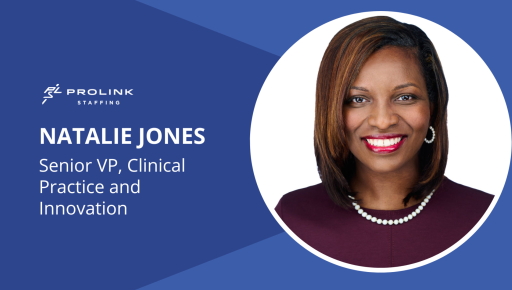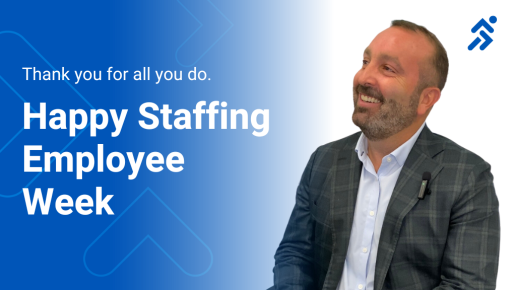It’s no secret that the healthcare industry is in the midst of a staffing crisis. More people are leaving the industry as a result of burnout and other factors, potentially leaving patients with inadequate care and putting a substantial amount of stress on remaining staff members.
Is there a way to manage the problem? By understanding a bit more about what led to the crisis, it’s possible to come up with strategies that will benefit patients as well as healthcare organizations.
Why is there a healthcare staffing crisis?
The healthcare worker crisis is a worldwide issue. It was already beginning to rear its head before the COVID-19 pandemic, but the crisis brought on by the pandemic only made the issue worse. The pandemic put a huge strain on the entire healthcare system—especially on nurses. It led to burnout and a concern about safety, prompting those nurses to leave in droves.
America’s aging population has also played a role in the staffing crisis. The baby boomers are aging, and that’s shifting the demographics. In the United States, one in six people is over 65. An aging population, especially one as large as this one, will require more medical care—in particular in the areas of nursing and primary care.
Burnout and high turnover are serious concerns even now. Those in the healthcare industry, including nurses and doctors, deal with long hours, large numbers of patients, and highly stressful work. This can quickly overwhelm, leading to job dissatisfaction and even mental health concerns like depression and anxiety.
All of this causes medical staff to re-evaluate their goals and careers and results in a significant number of them leaving their positions. What does that mean? More stress on the remaining staff.
To make things even more difficult, onboarding and training new staff is challenging in the healthcare industry. The training needed to join the various healthcare fields can be long and costly, potentially deterring those who may have been interested in those career paths.
Even if they become part of the workforce, onboarding them is complex. Because of high turnover rates, it often happens that medical practices get stuck continuously onboarding new employees instead of being able to focus on their patients or other functions.
There’s also an uneven distribution of healthcare professionals. Rural areas, in particular, have a hard time attracting and retaining healthcare workers.
Lower quality of care and other consequences of medical staffing shortages
Staffing shortages affect everyone—not just the patients. Healthcare workers who do remain in their roles experience more stress and a heavier workload. This can lead to further burnout issues and higher turnover rates.
Struggling to recruit and retain staff results in higher vacancies, which translates into longer wait times for patients.
Quality of care can also suffer. Longer wait times for appointments, inadequate follow-up care, and other issues are all much more likely to happen in understaffed healthcare organizations. These problems lower patient satisfaction as well as health outcomes, leading patients to require further care. All of that puts more strain on the system.
Medical staffing issues also put financial stress on the industry. This problem can particularly affect smaller practices and organizations that may feel pressured to offer higher salaries or other incentives to retain staff.
Dealing with the crisis: Strategies for healthcare facilities
Managing the staffing crisis requires multi-faceted solutions. But where do you begin? One option is to learn why your staff left in the first place so you can make the necessary changes to help retain new staff.
Consider diversity and inclusivity. Creating a welcoming environment for everyone in the industry can help reduce turnover issues. People are less likely to leave a position in which they feel respected and supported.
Another excellent option is to turn to travel nurses. They’re not permanent, in theory, but it’s possible to extend contracts and even offer long-term postings for people who match your needs. The travel nursing industry is growing because of the many perks the positions offer, so it’s an option to consider.
Offer flexibility for new hires. Schedule flexibility is very attractive, allowing for the accommodation of irregular schedules that can attract top talent.
A thorough analysis of the organization can prove invaluable. You want to identify where there’s inefficiency that could be affecting current staff and burdening a struggling system even more. For example, you may have several supervising physicians working the same shifts when they could be spread out for more efficient services.
Listen to your employees. Often, they’ll be able to tell you exactly where the problem is. No one knows your workplace like the people who work there; keeping the channels of communication open makes a difference. Why not offer anonymous surveys or other similar options?
Finding the right staffing agency is also important. You want a company that can point you to candidates who have been carefully vetted and are ready to get to work.
Filling those vacancies: Reach out to Prolink for help
Nearly all healthcare facilities in the United States have suffered some form of staffing shortage in the past years. Although this is common, it doesn’t have to be a forgone conclusion for your facility.
To find the right people to fill the shortages you have, you want top talent and employees who will commit to a position. Prolink offers well-qualified, engaged talent and retention strategies to keep the best people at your hospital. From nursing, to allied health, to alternative strategies like international clinicians, Prolink offers tailored workforce solutions for your exact needs.
Interested? Have questions? Click below to reach out and get started.










